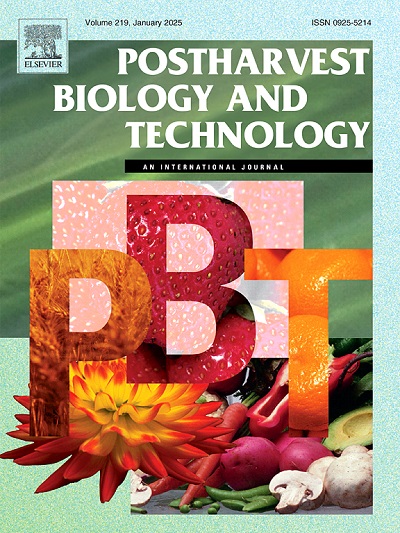Bacillus subtilis volatile organic compounds inhibit the cutinase gene expression of Colletotrichum gloeosporioides resulting in the control of postharvest fruit anthracnose
IF 6.4
1区 农林科学
Q1 AGRONOMY
引用次数: 0
Abstract
Colletotrichum gloeosporioides is a commonly occurring fungal pathogen that causes anthracnose in postharvest fruit and vegetables, significantly reducing the quality and shelf life of fresh produce. Bacillus subtilis, an important biocontrol bacterium, can secrete volatile organic compounds (VOCs) that inhibit C. gloeosporioides infection. In this study, the process of C. gloeosporioides infection of longan (Dimocarpus longan Lour.) and the inhibition of C. gloeosporioides infection of longan by B. subtilis CF-3 VOCs were studied. The differentially expressed genes of C. gloeosporioides were analyzed using transcriptomics. Results showed that B. subtilis CF-3 VOCs could decrease the expression levels of genes related to nitrogen source utilization, environmental tolerance and invasiveness in C. gloeosporioides, thereby reducing the pathogen’s infection ability. One of the affected genes was cutA, which was predicted to be a cutinase gene, associated with the pathogenicity of C. gloeosporioides. The deletion of gene cutA could, thus, decrease the pathogenicity of C. gloeosporioides during its infection of longan, mango and loquat. This study verified a mechanism through B. subtilis CF-3 VOCs decrease the pathogenicity of C. gloeosporioides, which helps to understand the biocontrol mechanism of B. subtilis CF-3 and highlight its potential application in postharvest agricultural product protection.
求助全文
约1分钟内获得全文
求助全文
来源期刊

Postharvest Biology and Technology
农林科学-农艺学
CiteScore
12.00
自引率
11.40%
发文量
309
审稿时长
38 days
期刊介绍:
The journal is devoted exclusively to the publication of original papers, review articles and frontiers articles on biological and technological postharvest research. This includes the areas of postharvest storage, treatments and underpinning mechanisms, quality evaluation, packaging, handling and distribution of fresh horticultural crops including fruit, vegetables, flowers and nuts, but excluding grains, seeds and forages.
Papers reporting novel insights from fundamental and interdisciplinary research will be particularly encouraged. These disciplines include systems biology, bioinformatics, entomology, plant physiology, plant pathology, (bio)chemistry, engineering, modelling, and technologies for nondestructive testing.
Manuscripts on fresh food crops that will be further processed after postharvest storage, or on food processes beyond refrigeration, packaging and minimal processing will not be considered.
 求助内容:
求助内容: 应助结果提醒方式:
应助结果提醒方式:


